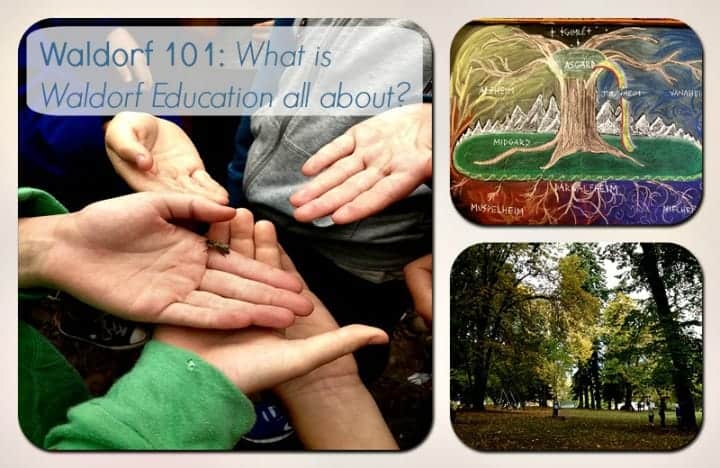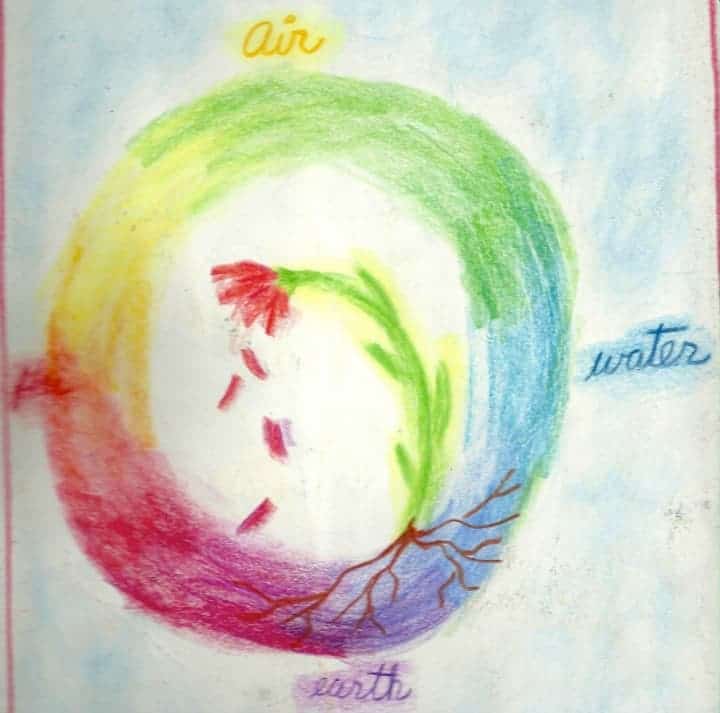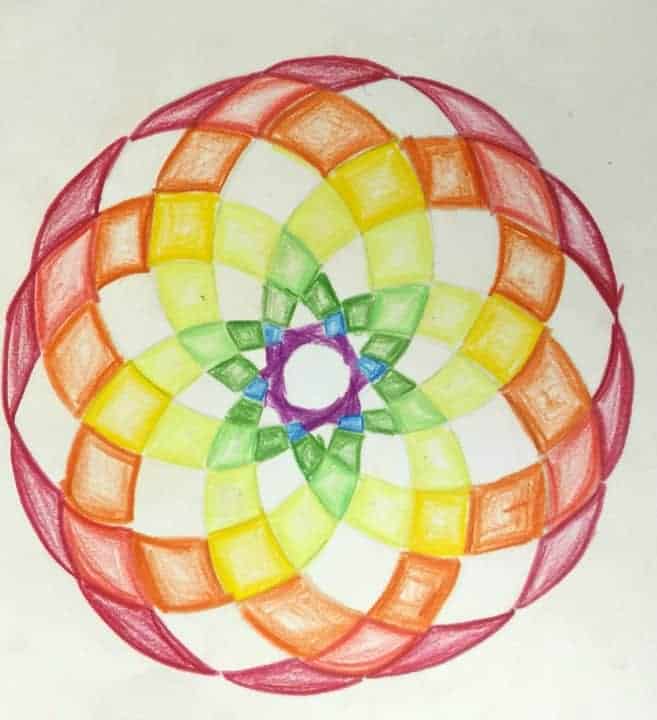Waldorf 101: What is Waldorf Education all about?
Maybe you’ve encountered Waldorf pedagogy in your curriculum research. Or maybe there was a Waldorf homeschooler in your weekly homeschooling group.
Like homeschoolers tend to be, you were probably interested and curious about another educational philosophy. Maybe you even took your research to the next step with a Google search. You probably found idyllic images of children playing in nature, beautiful artwork in vibrant watercolors and thoughtful articles that referenced educating the “whole” child with reverence and love.

As lovely as these images are, they don’t give a lot of information about what is really at the foundation of Waldorf Education.
If you’ve ever wondered what Waldorf Education is all about, read on.
Connection With Nature
Waldorf teachers, whether at home or in a school setting, strive to build a connection between their students and the natural world. Throughout the grades, this connection to the natural world is maintained, in different ways.
Preschool and Kindergarten – For the very young child, the connection with nature is all about sensory experiences. The most nourishing environment for these little ones is the outdoors where they can feel the cool wind on their soft cheeks and smell the pine as needles crunch underfoot. To further benefit from the experience of nature, many Waldorf early childhood programs are implementing the traditional “forest kindergarten” that has been in practice in Northern Europe for decades.
Lower Grades – For students in grades 1-5 the connection with nature comes in the form of outdoor play. Many of us have memories of staying outside until the streetlights came on, playing with our neighborhood friends. This healthy, strength-building, physical play is becoming more and more rare as families are more isolated and screen-time is so difficult to avoid.

Middle School – Though middle schoolers can easily find themselves distracted by their busy, active lives, Waldorf teachers work to continue to provide these students with an experience of the natural world. Many middle schoolers will go on backpacking trips and team-building exercises in the outdoors. Their science curriculum further emphasizes this connection by encouraging an observation-focused approach to learning about the natural world.
Emphasis on Human Connection
In addition to connecting with nature, Waldorf philosophy emphasizes a connection between human beings. All new learning content is shared directly from teacher to student, without the level of disconnect that a textbook can provide. In fact, Waldorf students create their own textbooks, full of beautiful illustrations and original compositions, based on their teacher’s stories and lectures.
The idea here is that teachers, whether they are homeschooling parents or classroom teachers, know their students far better than any textbook company does. Because of this, they are the perfect people to be crafting a curriculum that is going to captivate and engage their students.

Developmental Education
The aspect of Waldorf Education that teachers and parents appreciate most is its dedication to a developmentally-appropriate approach. The child development picture put forth by Austrian philosopher Rudolf Steiner is the guiding force behind Waldorf Education. Steiner’s vision of child development recognizes that children’s development includes not just physical and academic benchmarks, but also socio-emotional achievements.
The Waldorf curriculum aims to meet the child’s development in all of these realms – physical, academic, and emotional. You may have heard the standard claim of Waldorf pedagogy – an education that meets the child’s head, heart, and hands.
Modern Research
Studies confirm some of these practices, particularly the emphasis on activity, exploration, and play. Many homeschoolers recognize the value of activity, exploration, and play and they appreciate the flexibility that the homeschooling environment gives them to provide their children with these important aspects of their education. In many ways, the home is the perfect place for Waldorf Education, particularly for the young child.
If your interest is piqued and you want to read more, check out these links for more information:
A Waldorf Journey — This is my own blog where I chronicle my own experiences as a Waldorf teacher and parent.
The Parenting Passageway — Carrie is a Waldorf homeschooler whose lengthy posts about the philosophical underpinnings of her work with her children are fantastic resources.
Frontier Dreams — Another beautiful Waldorf homeschooling/lifestyle blog. Sweet and delightful.
Happy Whimsical Hearts — Another Waldorf homeschool blogger from Australia.
There are also all kinds of curriculum resources out there. If you’re interested in incorporating some Waldorf principles into your homeschooling life, I recommend starting slowly and choosing aspects of the approach that already resonate with your current practices.
Waldorf doesn’t have to be an all-or-nothing proposition, so feel free to take the parts that work for you and your family.

Meredith Floyd-Preston is a mother of three teenagers and Waldorf teacher. She blogs about her experiences and inspirations about Waldorf Education at her blog A Waldorf Journey. She provides mentoring and curriculum support for classroom teachers and homeschoolers.
This article was written by a Weird, Unsocialized Homeschoolers guest author. See the author's full bio in the body of the post.



Thank you for clarifying it. The Waldorf approach has always somewhat mystified me, and I often get it conused with the Montessori approach. (I’m sure it’s not the first time you’ve heard that!) I love the idea of including nature as a focal point. Most of my kids are very outdoorsy, so we do spend an awful lot of time outside.
People often get Waldorf and Montessori confused, but they’re actually really different from each other. Outside time is so essential — when my kids were little it seemed to make everything easier!